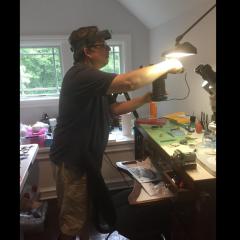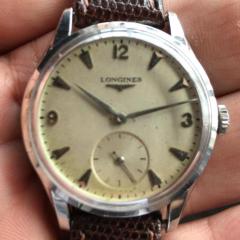Watchmaker collets, Maintenance.
-
Recently Browsing
- No registered users viewing this page.
-
Topics
-
Posts
-
By nevenbekriev · Posted
Search 'PCB carbide drill bits'. They come in sets of 10 or 50 and have 3.175mm tail. They are cheap rather than affordable. Using this drill bits has been discussed here many times - they are longer than needed and easy to break, so it is useful to practice sharpening hem and drilling some useless parts to gather some experience before real work. -
I'm a newb who is a bit late to the party here. I've purchased a Horia movement holder clone. And I'm aware that the support pins for the SW500 chronograph jewels can be different sizes. I purchased 0.8mm pins with the holder. These were all that were available at the time. Will these be the right size? Can someone shed a little light on this for me please?
-
That looks fantastic! I'm obviously a little late to the party here. Can you tell me where you sourced the case that you used in this build?
-
If pivot shoulder almost touches the mainplate, you will see lower amplitude and free oscilation comes to stop quicker. Such touching can stop the watch. This caliber is based on FHF, I think. So some parts of a cheaper movement of same caliber might interchange. Both observation point to pivot worn short, which support you suspect , "worn pivot". The problem with pivots wear to this point is , though the watch runs, pivots can easily jump out of jewel holes in the event of shock, pivots are actually not touching the end stones. Classic watch repair recommends staff replacement or elongating pivots. Non classic let's you flip the end stones to have the dome side of end stone facing the pivot end, this will somewhat or wholly compensate for the wear. Regs
-
This watch has a pin end mainspring. It's a blued steel spring and may be the original >100 year old part. As you can see, it is quite set. Can anyone suggest where I might be able to obtain such a spring today? Dimensions: Height: 140 Thickness: 010 Arbor diameter: 340 Barrel diameter 989 (1/100 mm)
-








Recommended Posts
Join the conversation
You can post now and register later. If you have an account, sign in now to post with your account.
Note: Your post will require moderator approval before it will be visible.